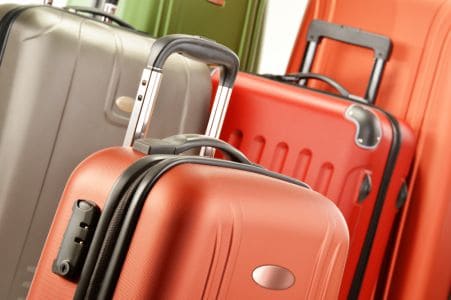In your quest for a new suitcase, you may opt for an ever-so-popular hardside suitcase over softside luggage to match your travel needs, and that brings you to the next step, which is choosing the perfect suitcase material. Most travelers continue to be unaware of the material of their luggage; however, this seemingly minor feature majorly affects the durability, price, and weight of the suitcase.
If you are a frequent traveler, the durability of your suitcase, that determines its ability to withstand rough conditions, may be your top priority. Meanwhile, if you are a heavy packer traveling by plane, a light bag that doesn’t add much to the scale might be your preferred choice. In short, your luggage material matters. So, do you want to know what the best hardside luggage material is? This article dives into the common materials for hardside suitcases and explains the affected factors. We’ll compare ABS Vs polycarbonate Vs polypropylene Vs aluminum, as they are the four types of material for hard shell luggage that you’ll see on the market most often.
Table of Contents
The Most Popular Hardside Luggage Materials
ABS (Acrylonitrile Butadiene Styrene)
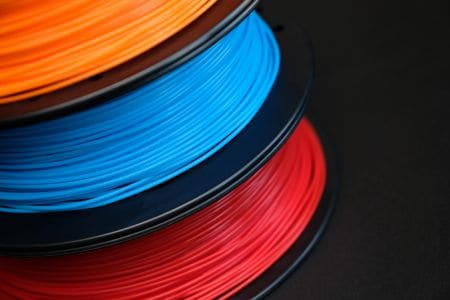
ABS is a type of thermoplastic, made of a polymer of three different types of plastic, that is comparatively easy to produce by manufacturers, making it widely available. It is typically used for injection molding applications. It is also why its price tag is quite low. If affordability is your main concern, then luggage made with ABS might be the best pick for you. However, when it comes to other features, ABS finds itself in the middle or the bottom of the pack.
The material itself is relatively rigid and is thus more prone to cracking. It is also not resistant to heat but certain additives do increase its melting point to make it suitable for various applications. Its weight is on the lighter side, which is a good feature for a suitcase you intend to bring as a lightweight carry-on, since the bag will always be with you and won’t face mistreatment by baggage handlers. Otherwise, it’s best to choose an ABS blend or other materials mentioned below.
Pros:
- It’s affordable.
- It’s a relatively lightweight material.
Cons:
- It is less durable.
Polycarbonate
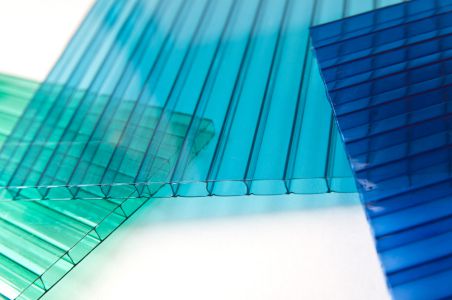
Polycarbonate is a strong and stiff thermoplastic polymer with top class impact resistance. It is used to make bulletproof glass, safety goggles, and helmets, among other things. It is an extremely popular material for making luggage.
Polycarbonate suitcases are known to be durable and high-quality luggage. If you are looking for a suitcase that is scratch, impact, stain, corrosion, and heat resistant and that is available in a multitude of sizes and designs, you need not look further. The other advantage of polycarbonate is that if it gets dented, it can be returned to its original shape. A polycarbonate suitcase is a frequent traveler’s friend, with the only downside being that it weighs comparatively more than most other hardside luggage. This makes it better suited as check-in baggage rather than carry-on luggage in an airplane, but you do have to make sure that you don’t overpack and go over a weight limit if you’re flying economy class. Such a suitcase comes at a heftier price. However, depending on the frequency of your travel, it may be worth it.
If you like the features of both ABS and polycarbonate suitcases, the good news is that there are blends of the two that make the luggage more durable while keeping its weight on the lighter side.
Pros:
- Long-lasting.
- Available in different designs.
- Won’t crack.
Cons:
- Expensive.
- Comparatively heavier.
Polypropylene
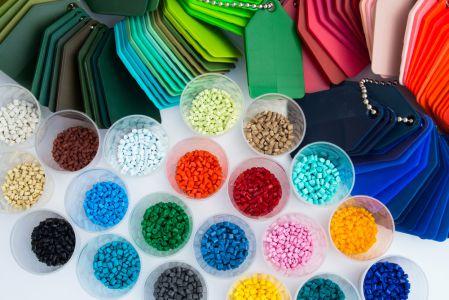
Polypropylene suitcases are best described as good lightweight hardside luggage, and they lie in the middle of ABS and polycarbonate suitcases on the scale of durability. This is also a thermoplastic polymer but it is manufactured through chain growth polymerization. It is widely used in injection molding, and because of its ability to adhere to a wide variety of additives, like printing ink and paint, it is ideal for making luggage in fun prints and colors.
Your first impression while comparing a suitcase made with polypropylene over ABS would be that the latter may be more durable due to its rigid nature. Upon further investigation, however, you will find that polypropylene suitcases are more durable. This is one of the many reasons why you should be aware of the material of hard case suitcases.
What differentiates a polypropylene suitcase from a polycarbonate one is that it is slightly less durable. Nonetheless, it is lightweight, and its price is lower than the latter. This makes it suitable for frequent travelers who do not wish to pay the high price of polycarbonate luggage. Additionally, similar to the latter, polypropylene baggage is strong and heat, scratch, and corrosion resistant.
Pros:
- Lightweight compared to other luggage materials.
- Versatile when it comes to color choices and designs.
Cons:
- Less durable than polycarbonate suitcases.
Aluminum
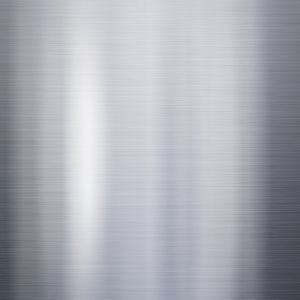
Lastly, in a league of its own are aluminum suitcases. This material is already famous for its strength but being a metal instead of a type of plastic, it is also the most durable luggage material, making it an excellent choice. In fact, most aluminum luggage manufacturers market it as indestructible and the best hard case luggage material, so such a suitcase would last you a lifetime. In addition, the sophisticated look of these suitcases adds to the overall luxurious feel. On the other hand, the price is a tough pill to swallow if you are just a regular traveler. The cost of producing the luggage proves to be an expensive affair that racks up the final price. Furthermore, this hefty price comes with the hefty weight of the baggage.
If you are a heavy packer, this case doesn’t have much give, and due to its substantial weight on its own, you might face a few weight restrictions, unless you travel by business or first class. Additionally, while it provides great protection to your belongings inside, its shell isn’t scratch resistant. Many frequent travelers actually like this because scratches on shiny silver-colored metal shows that the piece is battle tested and has flown thousands of miles. Nonetheless, if you are a light packer looking for a long-lasting suitcase, who isn’t deterred by the price tag or weight, an aluminum piece of luggage is the way to go.
Pros:
- Known for its durability.
- Sophisticated looks.
- Great for protecting your belongings.
Cons:
- Very expensive.
- Heavier than the other materials.
Factors Dependent on Hardside Luggage Material
Like we mentioned before, the luggage material used affects more than just the attractiveness of the suitcase. Significant factors such as durability and strength also are impacted by the material chosen. The list below mentions a few factors that are affected by the selected material. The way you prioritize these factors will allow you to find a suitable material better and, subsequently, the right suitcase.
Durability
No one buys a suitcase intending to replace it often. For the sake of practicality, you would want a suitcase that is suited to the frequency and nature of your travel while also protecting your belongings, especially if they are fragile. Furthermore, the number of people handling your suitcase must be considered.
An ABS suitcase would not be able to tolerate very rough baggage handling and might crack when thrown around or a heavier suitcase is dropped on it. ABS luggage may be economical in the short run, but it would entail frequent replacements in the long run. However, it may be a smart choice if it’s only carry on sized and you never have to check it.
The polypropylene and polycarbonate suitcases are strong and scratch, temperature, and impact resistant, with the latter being a more durable material. This allows them to withstand different temperatures without much damage. Lastly, the aluminum baggage beats the others on overall durability, as it is long-lasting, but the outer shell is prone to scratches.
Based on your traveling needs, you may choose the level of durability you desire, keeping in mind factors such as dealing with the weather, rough handling by baggage handlers, number of trips, and so on.
Strength
In the long run, suitcases have to withstand less than delicate handling, and thus, the strength of a hardcase baggage should be assessed.
ABS comes at the bottom of the pack as it is prone to dents and cracks on harsh impact, so your belongings inside may not be fully protected. Up next is polypropylene suitcases. They are flexible and reasonably strong. If polypropylene gets dented, it’s not easy to hammer it back to shape. So, if you are looking for a suitcase that would survive a more forceful impact, it’s better to opt for polycarbonate. It is known for its strength, impact resistance, and flexible material. If you want to sit on your suitcase to fit ‘one last thing’ you can comfortably do so with such a suitcase without denting it. An aluminum suitcase would also allow you to do the same and can survive rough handling but not without some evident ‘battle scratches.’ Too much force, however, would cause the shell to bend.
Weight
While traveling, you may have to deal with weight restrictions, especially if you intend to bring it as carry-on luggage for international flights or if you’re checking it in and your ticket allows quite a low limit. You may also have to drag it for an extended period, which becomes easier if the suitcase is lightweight. If you don’t have access to a luggage scale, you may want to find another way to weigh your luggage before a flight.
Up first is the aluminum baggage that weighs much more than the average suitcase. Therefore, if you get this suitcase, you might have to be more mindful of how much you pack and how heavy it is. You’ll probably only see luxury travelers with them because flying business or first class gets you a much higher weight limit.
Next up is polycarbonate, which is heavy but not as heavy as aluminum. Following it is ABS, which is relatively light but not as light as polypropylene. Polypropylene suitcases are perfect if you plan to drag them for an extended period or if you want to bring them as carry-on luggage.
Budget
The material of the luggage also impacts its final price tag. Some are easy to produce and are thus cheap, while others are harder to come by and may cause a dent in your wallet.
Starting with the most expensive material, we have aluminum suitcases. The price intimidates most travelers, so such suitcases are used by those in need of the specific features offered by aluminum suitcases or by luxury travelers who are insensitive to their price.
Polycarbonate suitcases are next as they still cost a pretty penny but are nowhere close to the price of aluminum luggage. Onto the more affordable options, we have polypropylene luggage, and that’s followed by ABS luggage. ABS plastic suitcases are without a doubt the most budget-friendly hardcase luggage.
Design
People love hardcase suitcases as they come in a variety of different designs and colors. Aluminum suitcases are more known for their futuristic style, but since only a few manufacturers make them, their design options are pretty limited and only come in the color of aluminum as is. ABS ones are available in a variety of designs. However, when it comes to variety, they cannot beat polypropylene and polycarbonate luggage. Both materials allow for such suitcases to be available in a wide range of colors, textures, and designs, especially polycarbonate, which also has a transparent option, although you wouldn’t see a transparent suitcase any time soon!
Brands
When searching for brands that sell actual aluminum suitcases, you must be sure to differentiate them from those cases that only have an aluminum frame while the rest of the shell is another material.
Brands such as Rimowa, Tumi, and Away are known for their genuine aluminum suitcases. In addition, Zero Haliburton sells a limited number of aluminum suitcases that incorporate technology such as a fingerprint lock. As for the other three materials, most major brands produce suitcases made with them, and the most popular luggage companies are Samsonite, Delsey, American Tourister, and the like.
FAQs on Types of Luggage Material
Polycarbonate suitcases are durable, as they are temperature, scratch, impact, and stain-resistant and can withstand more force or abuse than many other materials.
Polycarbonate luggage is quite durable, and for the most part, it is impact resistant. However, it is not indestructible, and with a high impact force, it may crack. The crack, depending on its severity, may or may not be repairable.
Considering the state of the cracked luggage, it may or may not be repairable. If repairable, there are several options for your polycarbonate luggage once it has cracked. For a temporary fix, opt for duct tape, but for a permanent fix, opt for resin.
No, the two have quite a few differences, such as ABS being a lightweight and cheap option that isn’t quite durable, while polycarbonate weighs more and is more expensive and durable. To combine the best features of the two, there are ABS blends with polycarbonate as one of the components in the combination.
No, ABS is lightweight, cheap, and not very durable, while polypropylene is comparatively even lighter. It is more durable and more expensive than ABS.
No, the difference between polycarbonate and polypropylene luggage is that polycarbonate weighs more, is more durable, and is expensive, while polypropylene suitcases are comparatively less durable, relatively cheaper material, and lightweight.

